Do you know all the little secrets about running a coffee shop?
According to incomplete statistics, there are more than 5000 cafes in Shanghai, with different sizes and styles. The big ones are magnificent, the small ones are delicate and exquisite. Generally speaking, a reasonable space design should start from the needs of people, taking into account not only the overall perception and experience of customers, but also the work line of the staff in the store. Ergonomic design will make everyone feel comfortable, and the overall space will produce humanistic flavor.
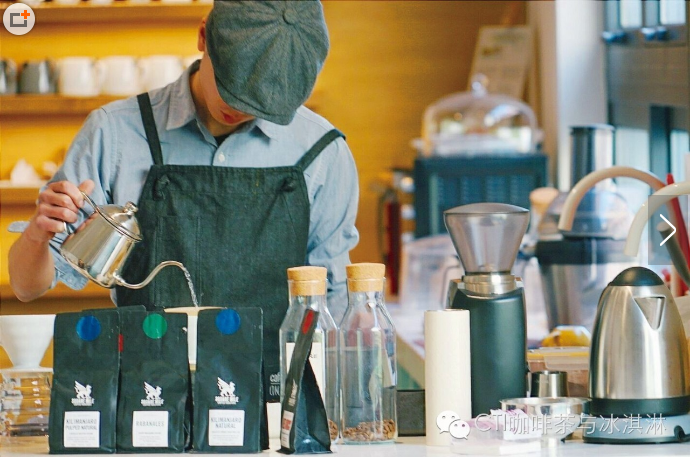
Four elements in a coffee shop
"the first element: a complete coffee production chain"
Part.2 service model
At present, there are mainly three types of cafes in the coffee market: full-self-service, semi-self-service, and full-service, with different styles, each with its own characteristics and advantages and disadvantages.
▼ full self-service: that is, the type of self-purchase, after the customer orders from the receiving counter, the clerk immediately begins to make the product, and after the production is completed, the customer can pick up the meal from the bar. The biggest operational advantage of this model is that the manpower cost is relatively low and the main staffing is only the cashiers and baristas. However, there are two sides to the matter. Since cafes with full self-service mode have always been dominated by outside shops, its requirements for efficiency are self-evident. in general, customers are not qualified if they fail to deliver the products within five minutes after ordering. And this is undoubtedly a challenge for takeout shops with a large volume of cups.
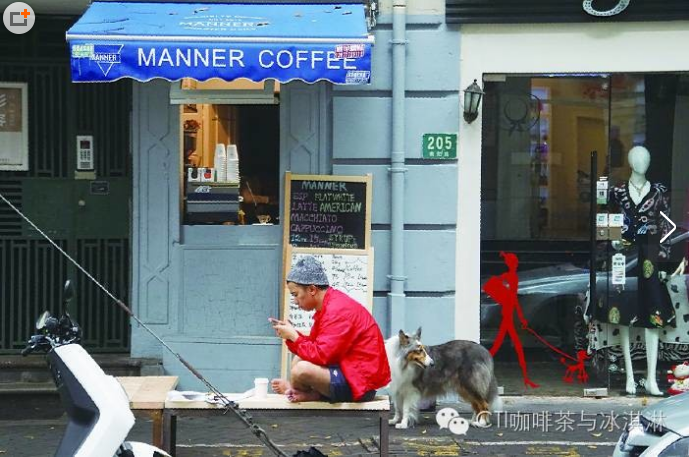
Typical case: at the end of 2015, British Big Issue magazine set up take-away coffee shop "Change Please" ① to help street people become baristas, which not only meets the growing demand for high-quality coffee, but also helps street friends regain their lives. In Shanghai, there is also such a Manner Cafe ②, which is only about two square meters and is known as the smallest cafe in Shanghai. Although it does not have a seat like an ordinary cafe, a full range of boutique coffee categories are not only of good quality but also relatively low in price, which makes it quickly popular with white-collar workers working around it.
▼ semi-self-service: that is, after customers buy the required products by themselves, they first find a seat to wait, and then the waiter will deliver the products. Coffee shops with simple meals are common in this model, and the rich categories will undoubtedly attract more customers to spend, and at the same time lead to an increase in the amount of coffee produced. This kind of coffee shop usually has outfield service staff, and the requirements for baristas' cup efficiency are relatively low.
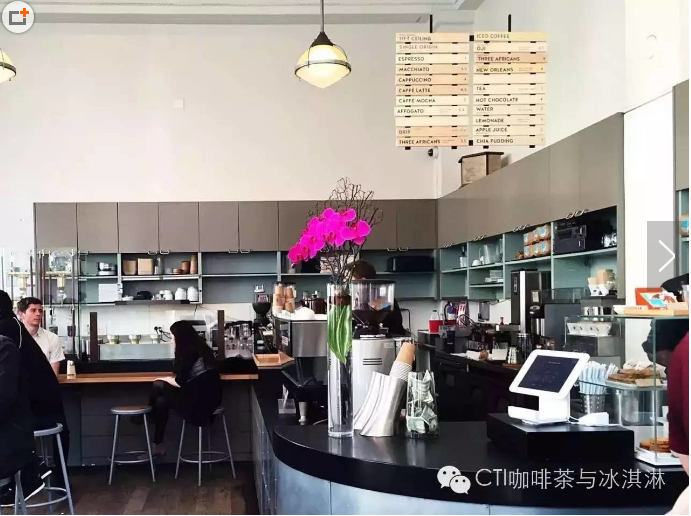
Typical case: this type of coffee shop is a common service model at home and abroad, such as several representative brands of the third wave of boutique coffee, such as Blue Bottle (blue bottle) ③, Intelligentsia Coffee (intellectual), etc., and most of them choose this type of service mode. And domestic cafes, especially independent boutique cafes, such as Shanghai's Mellower coffee, Seesaw, Mingqian Coffee and so on.
▼ full-service: that is, similar to the restaurant service model, customers by finding seats, ordering, checkout and other staff to provide full service. Coffee shops of this model usually have some dinner options, such as breakfast, spaghetti, soup, and even alcoholic drinks. The average consumption of customers is also much higher than the previous two service models, it is worth noting that the full-service model does not require a cashier in the bar, the outfield staff can be responsible for cashier work.
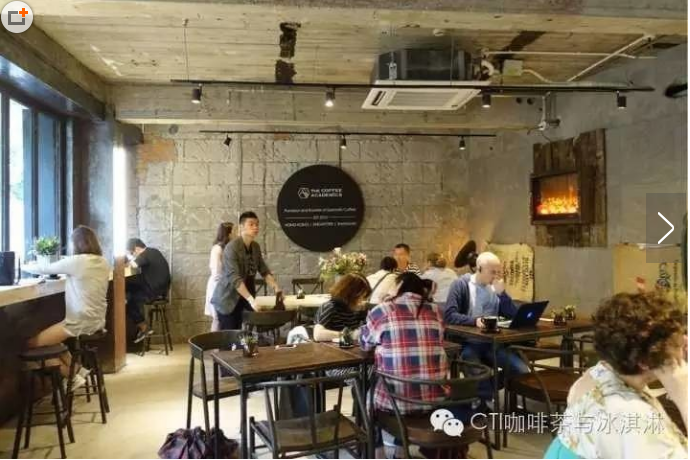
Typical case: The Coffee Academics ④, known as Hong Kong's "Coffee Research Institute", is a full-service coffee shop with self-baking, dessert and alcoholic beverage. it has successfully entered the mainland market this year and opened a branch in Shanghai, and so far, it has been loved by the people of Modu.
Part.3 overall design
1. Spatial layout division
According to the functional module, the space of a cafe can be divided into two parts: the bar area and the seating area.
The main user of the ▼ bar area is the barista, and the design should focus on adjusting the barista's working state to the most comfortable. That is, whether it is easy to manage the bar when making coffee, whether it is convenient to walk, whether the height of the bar is reasonable, whether it is convenient and accurate to observe the state of customers and respond, and so on.
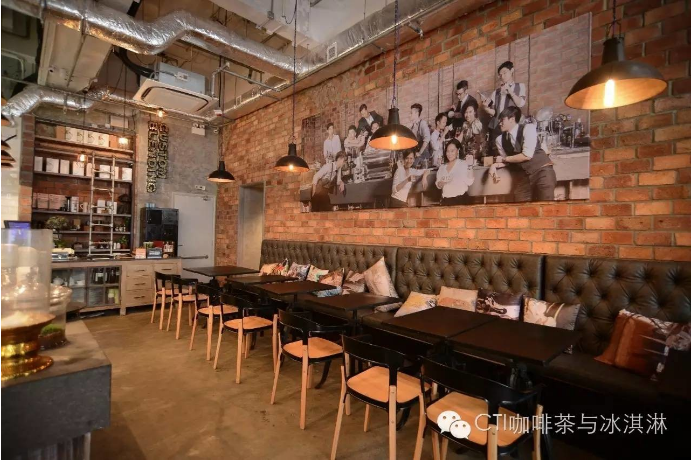
The main crowd of the service in the ▼ seat area is the customer, and it is also a special module that can be maximized. The specific design depends on the characteristics of the main target customer group. For example, if it is a take-out cafe, the seating area can be simplified to the minimum, or even there is no seating area; if it is mainly aimed at leisure, the seating area can be designed as comfortable as possible; if most of the customers are white-collar workers, then fast and simple designs such as hard lines of light industry are the most suitable.
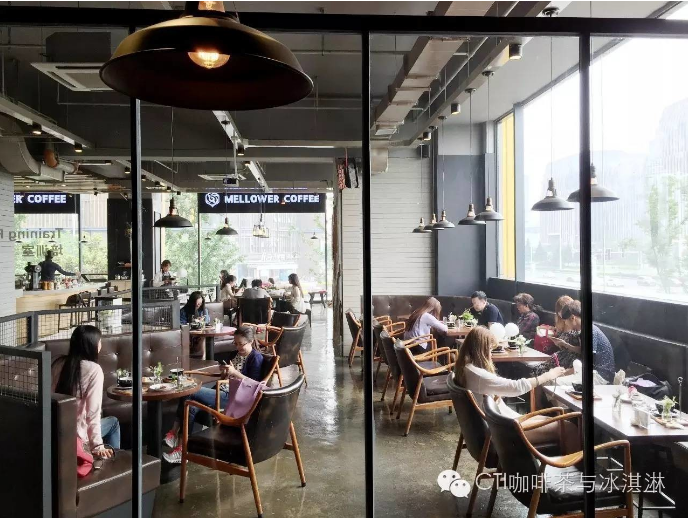
Coffee bar is equivalent to an open kitchen, when customers face the whole production process, if they face a mess, in the current era of food safety concerns, how can people rest assured. This requires baristas to maintain both the efficiency of the cup and the cleanliness of the bar.
two。 Soft matching and atmosphere setting off
When the overall space design is established, it is necessary to make the right collocation of objects in each functional area to maximize people's sensory experience.
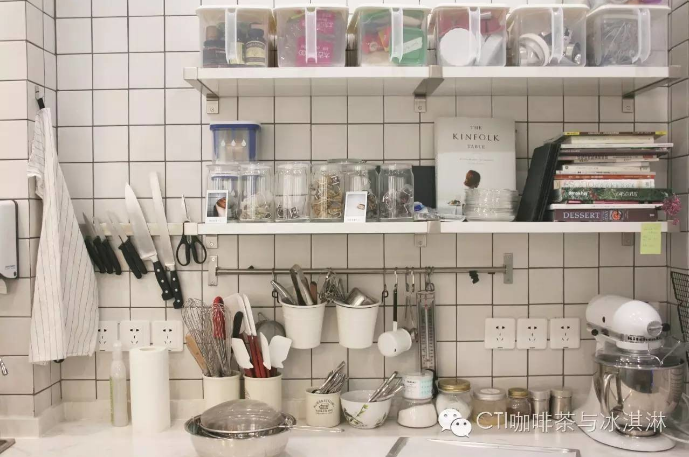
▼ sense of taste and smell: mainly depends on the quality and characteristics of coffee and food. Smart mixers often use the main flavor characteristics of different ingredients to strengthen or complement a flavor in coffee. For example, for people who have just come into contact with coffee, the sour and bitter in its flavor are often difficult to accept because it is more prominent, and smart stores always use desserts, cookies, or candy to neutralize the taste experience that is too prominent.
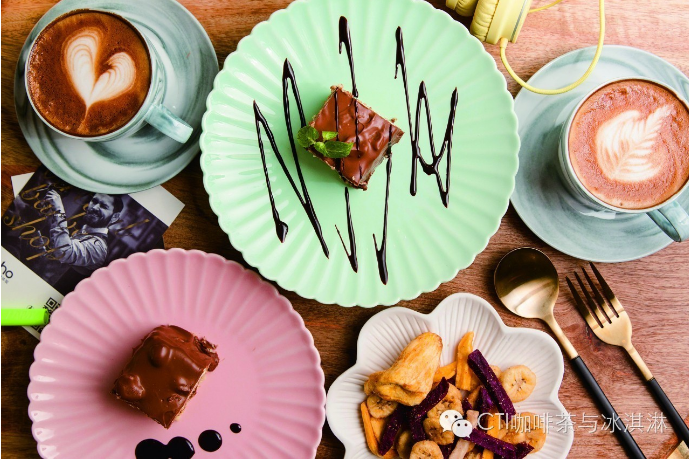
▼ tactile: mainly depends on the material. All the objects that can have physical contact with customers, such as coffee cups, tables and chairs, floors, menu and so on, can be modified to bring different experiences to customers.
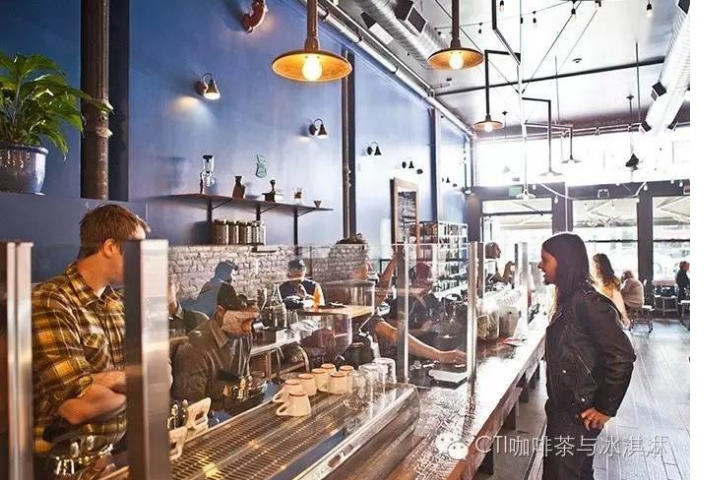
▼ vision: mainly depends on color and shape. The three elements of color: hue, lightness, and purity can completely create different atmosphere characteristics. For example, the color of macaron is warm and tranquil, while the combination of crimson, heavy and black is solemn and strong. Starting from the shape, the combination of straight, short and dense lines can greatly transform the original spatial form. The extension of lines can visually transform the size of the space, and straight changes can create different styles such as "tough" or "soft".
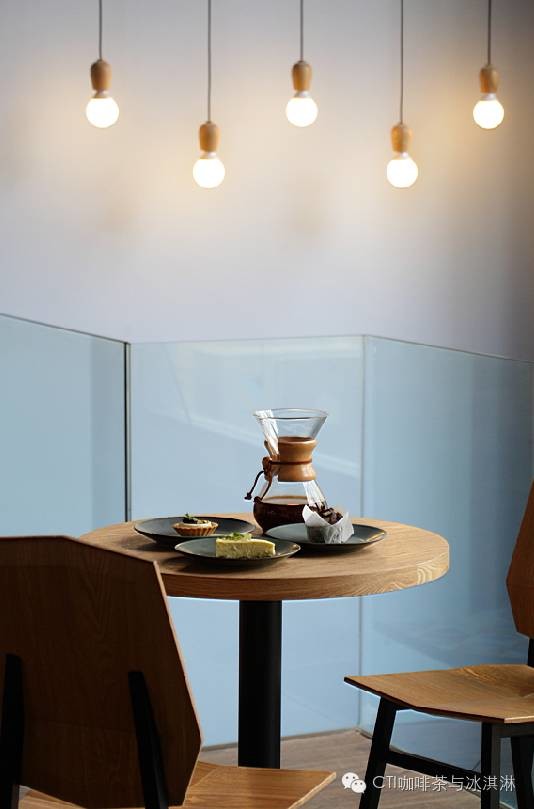
Part.4 brand positioning and promotion
In many life-style American TV dramas, such as Friends and bankrupt Sisters, the main stories take place in cafes or bars. This phenomenon precisely reminds us that if brands such as cafes, bars, youth tours and other living brands can be highly recognized in the surrounding communities, they can cultivate a stable customer base, which is conducive to the survival of cafes. Therefore, for operators, to open a shop first and then catch the crowd or catch the crowd before opening a shop is the difference between mending a sheep after it is lost and preparing in advance.
In the positioning of the brand, every cafe should adhere to the attitude of China's entry into WTO. Being divorced from the positioning of the public will only make the cafe disappear in the confusion of the crowd. On the contrary, only by actively integrating into the community and establishing a brand image with quality and attitude can we cultivate loyal fans with strong stickiness.
Let go of your feelings and keep your feet on the ground
As the carrier of coffee, the coffee shop undertakes the final link of the coffee industry, and it is also the place that gives customers the most direct feeling. The excessive concentration of operators to shape the "grade" will only give the public the wrong direction-coffee = literature and art. Such a binding will bring the coffee industry to the end of minority culture. The reason why an industry can move forward firmly on the land is not only the particularity of serving minorities, but also the necessity to do so. Coffee is a part of food culture. It is not an artistic product (it does not hinder the artistic beauty derived from coffee). Practitioners should not limit the possibility of coffee development by personal attributes. Coffee is neither cheap nor extravagant. It just needs more practitioners to focus on cultivating Chinese consumption habits, which should focus more on coffee itself, rather than binding a preset specific situation. No sunshine warm afternoon, no book-scented tea warm beauty, no bamboo orchestral instrumental music, let alone poetry and distance.
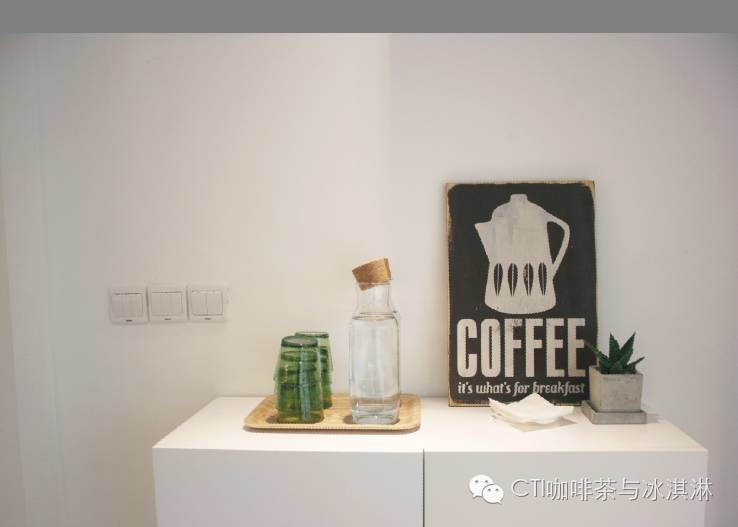
Important Notice :
前街咖啡 FrontStreet Coffee has moved to new addredd:
FrontStreet Coffee Address: 315,Donghua East Road,GuangZhou
Tel:020 38364473
- Prev
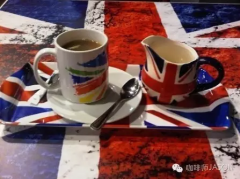
An introduction to the History of Coffee in Britain-the Development of Literary Cafe
Coffee is absolutely an integral part of British people's daily life. Whether rich or poor, from workers, students to high society, they can establish a close relationship with the cafes built along the street. For them, drinking coffee is an essential part of life. It is known all over the world that English people are addicted to tea. But from the mid-17th century to the early 18th century
- Next
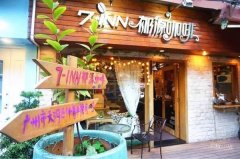
An important driving Force of Guangzhou Fine Coffee Culture: 7-inn Yuyuan Cafe
Do you remember where the first boutique coffee was drunk? Perhaps there are many Guangzhou coffee fans will say: Yuyuan ah! As the hour hand turned, my thoughts flew back to the coffee smell in my memory. In 2005, a pastoral cafe poked out half of its head from the lush flowers and grass, and there was a strong aroma of coffee in the house. The Taiwanese boss is enthusiastically discussing with local coffee fans about different places of origin.
Related
- What documents do you need to go through to open a coffee shop? coffee shop coffee shop certificate processing process
- How to purchase Coffee beans in small Cafe how to choose a suitable supplier for domestic Coffee supply Company
- How to drink Starbucks Fragrance White Coffee? how to make Australian White Coffee? what Italian coffee beans are recommended?
- The Story of Flora Coffee: the name of Flora Coffee Bean and the implication of the Flowers on Florna Coffee
- How much does a cup of coffee cost? How much is the profit of a cup of coffee? What is the profit of the coffee shop in a year?
- Yunnan small Coffee, known as "fragrant Coffee", introduces the characteristics of Alpine Arabica Coffee producing areas in Yunnan, China
- 2023 latest Starbucks full menu price list how much is a cup of Starbucks coffee what is better to drink the most popular hot and cold drinks recommended
- Starbucks different kinds of Coffee Price list Starbucks menu 2023 Top Ten Best drinks in Starbucks
- Starbucks Spring praise Comprehensive matching Coffee Bean theme Story Packaging implication and taste description
- The cost of a cup of coffee latte American coffee cost price and selling price

